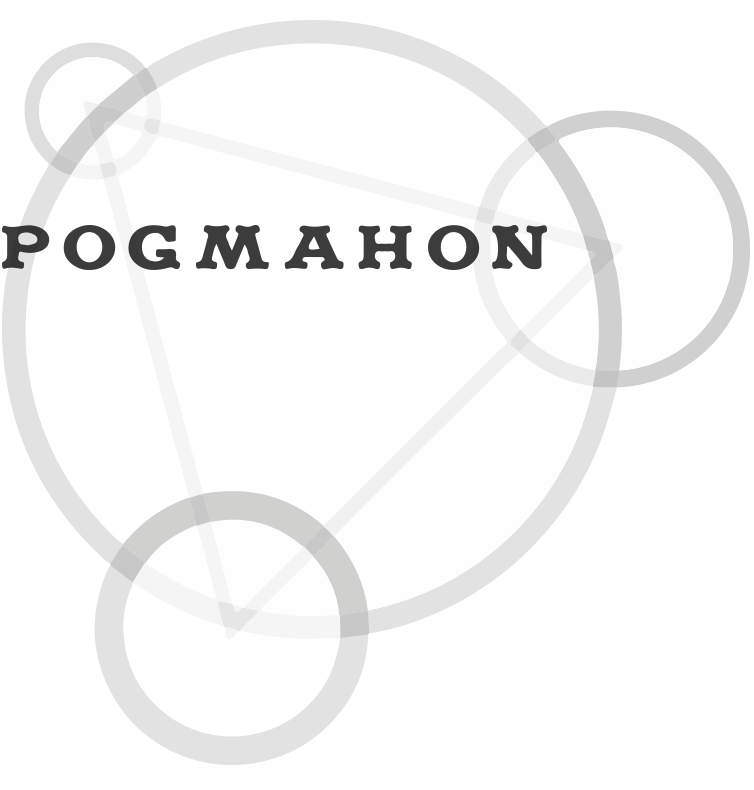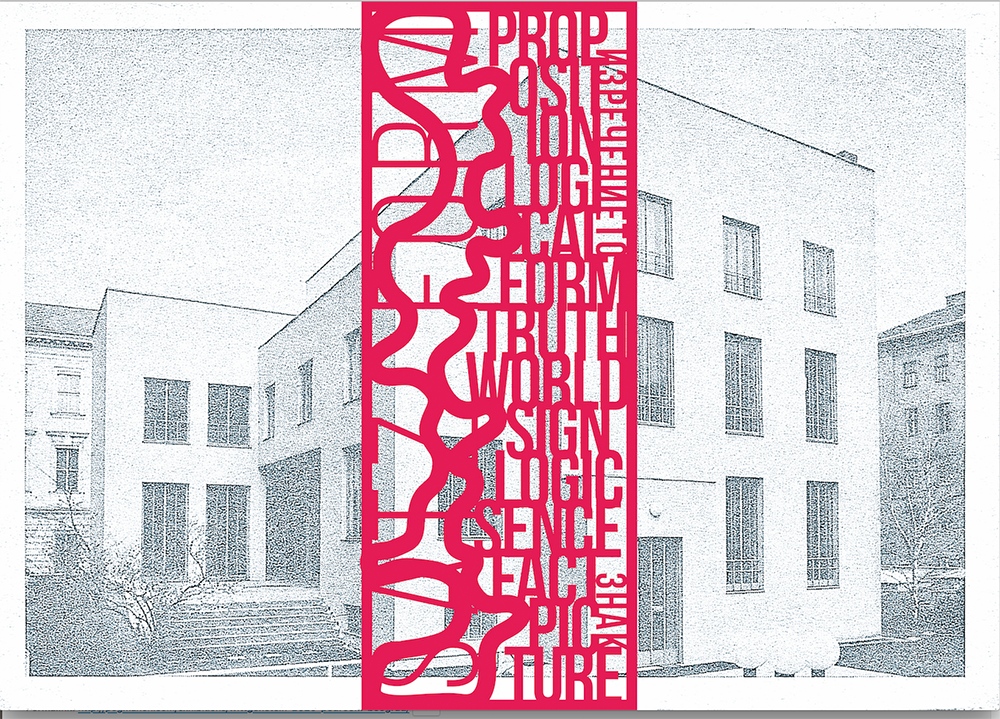WITTGENSTEIN 2020 PODROOM Beograd
PODROOM Belgrade
° Žarko Aleksic ° Àgnes Hamvas & Hubert Hasler ° Michael Koch ° Yukika Kudo ° Oscar Cueto ° Horia Marinescu ° Vlado Martek ° Svetlana Mircheva ° NOIMA ° Adelina Popnedeleva ° Eva-Maria Schartmüller ° Laura Rambelli ° Robert Reszner ° Borjana Ventzislavova ° Katarina Zdjelar
Vernissage 6. August, 2020
Duration 7. – 28. August, 2020
Local Curator Zorana Djakovic & Jana Gligorijevic
Pictures of the Exhibition
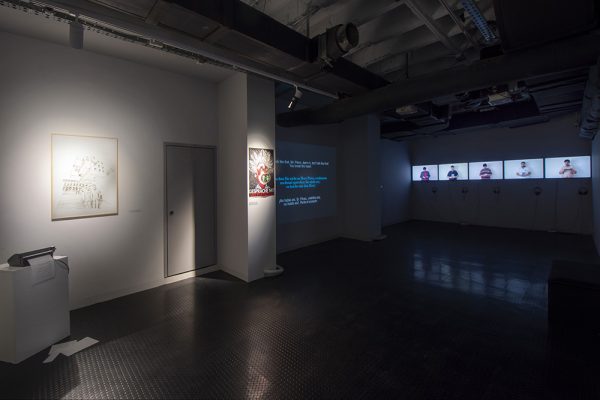
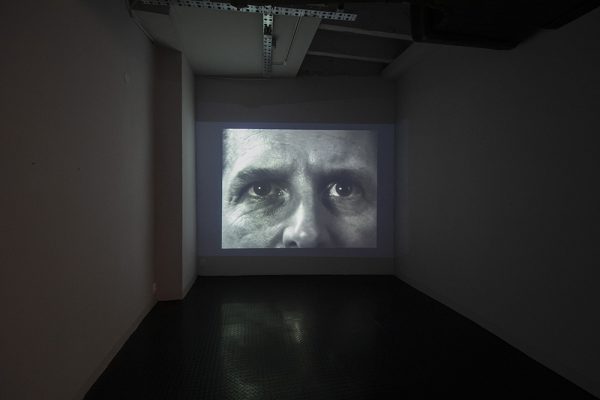
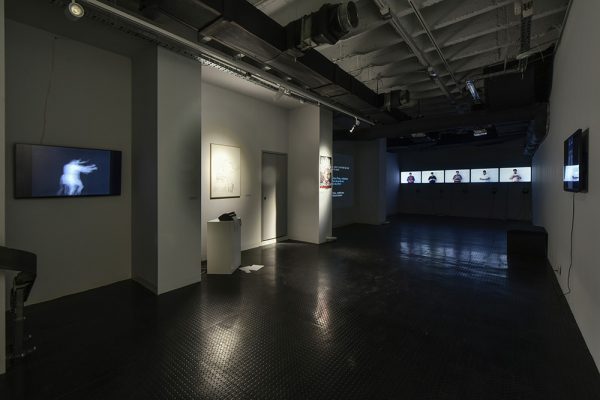
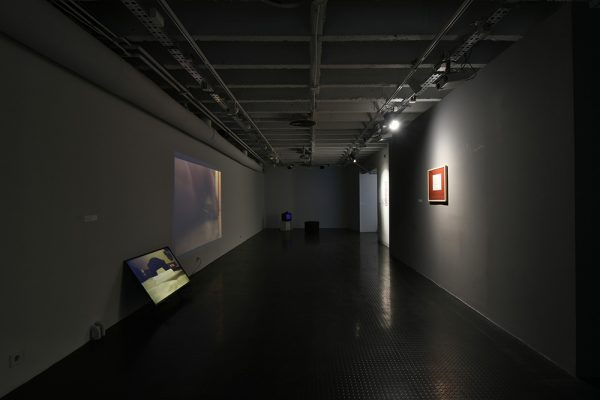
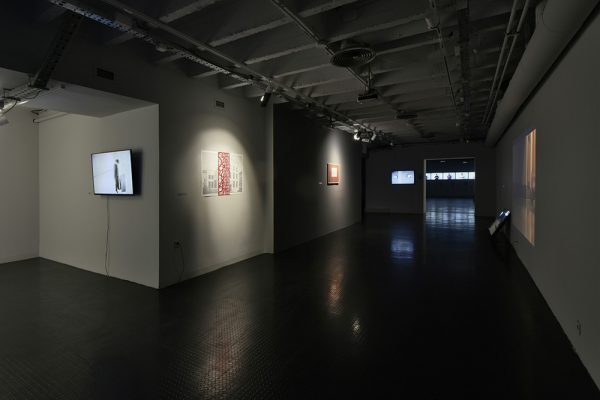
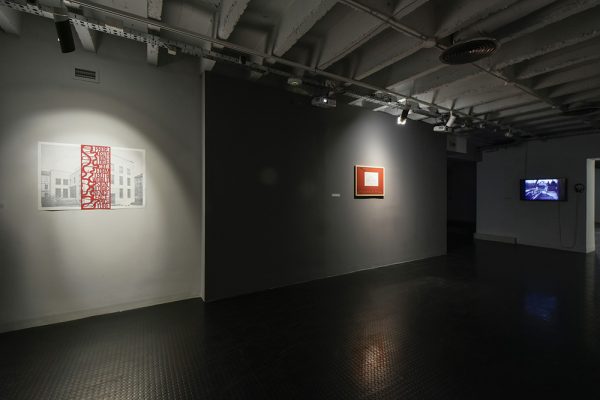
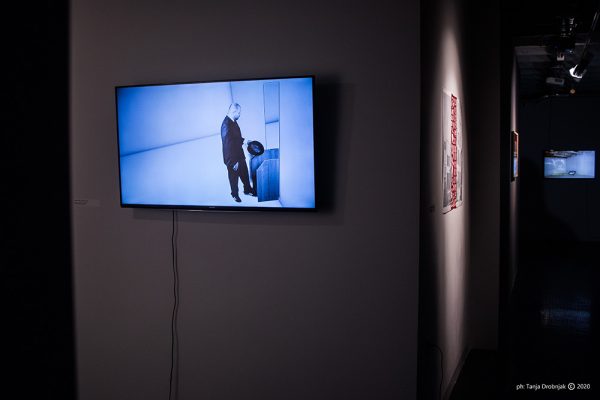
Photocredits by Tanja Drobnjak / Тања Дробњак & Milan Kralj /Милан Краљ
Press Links
KATARINA ZDJELAR Shoum/Study/ Video

Katarina Zdjelar’s video work »Shoum« starts with a blank, we see no image, but hear the sound of the 1984 Tears for Fears mega hit ‘Shout’. Then we see an iPod, a sheet of paper and the hands of two men from Belgrade, holding pens. Over the course of the next seven minutes we see how the two attempt to decipher the lyrics of ‘Shout’ as though they contained a coded message. This is in fact the case, considering that these men speak no English. Thus they phonetically transcribe what they hear, based on their own vocabulary and capacity to vocally interpret the unfamiliar. ‘Shoum Shoum Lajdi o Lau’, they write and sing, in a strange invented language somewhere between phonetic transcription, Serbian, and English, as ‘Tears for Fears’ sing ‘Shout, shout, let it all out’. We witness how through errors and deformations an entirely ‘new language’ is being created, which intriguingly relates to the original in a shifted way, namely acoustically. As quickly becomes clear, meaning here is less a matter of understanding than of processing and assimilation. Cut off from the lingua franca of a globalized world, with perseverance these two men create something of their own that lies between the foreign and the familiar. The work thus opens up space for critique by embracing the artist Mladen Stilinovic’s statement “An Artist Who Cannot Speak English Is No Artist” and its implicit antithesis.
Видео рад Катарине Здјелар Shoum започиње празнинон, не видимо слику, али чујемо звук мега хита Shout бенда Tears for Fears из 1984. године. Преображајем усмене речи у писану и самоизражену реч ствара се нова врста језика. Очигледно је да протагонисти не говоре енглески. Колико знам, у српском се пише као што се изговара, што може довести до потпуних промена на другим језицима. Брзо постаје јасно да је значење овде мање ствар разумевања, већ је питање обраде и асимилације. Одсечени од lingua franca глобализованог света, ова два човека упорношћу стварају нешто своје што лежи између страног и познатог. Дело на тај начин отвара простор за критику прихватајући изјаву уметника Младена Стилиновића „Умјетник који не зна говорити енглески није умјетник“ и његову имплицитну антитезу.
2020-Wittgenstein_ Branislav Dimitrijević _katarina zdjelar
ŽARKO ALEKSIć Five Essays / Videoinstallation
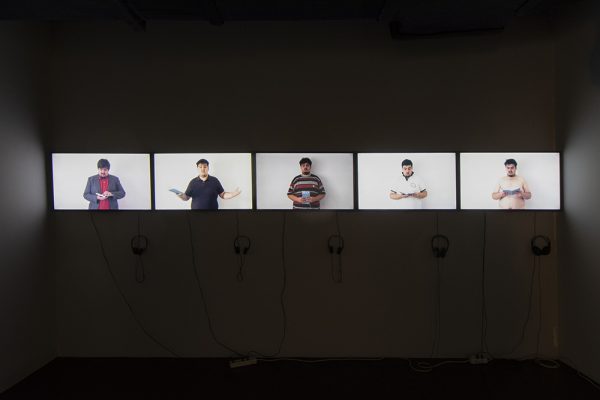
Five essays is a video installation consisting of 5 videos documenting his performances where he read essays and try to explain and problematize different themes and terms from philosophy using a single letter only.
Инсталација Жарка Алексића приказује пет различитих видео записа једног његовог перформанса у коме чита пет различитих есеја у пет различитих улога. Овај рад приказује личност комплексну попут Витгенштајнове, меандрирајући међу различитим филозофским приступима и одговарајућих пикторалних превода. Помоћу једног слова уметник покушава објаснити и тематизовати теме и концепте из филозофије.
HORIA MARINESCU Alptraum Wittgenstein / Digital Etching Ex. 1/1
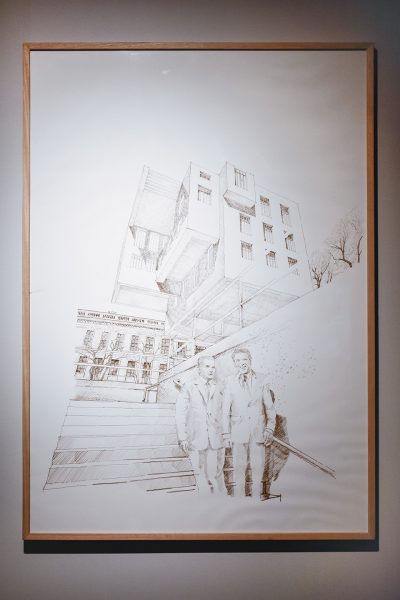
The inverted Modernity becomes for Horia Marinescu a reflection of the post-modernity, a loss of orientation – which is not meant in a stylistical way, but ethically and socially:
Horia Marinescu is preocuppied a lot by the Wittgenstein House. He wrote an essay and made photos for the Zeppelin architectural review. The house symbolises for him the Viennese Modernity and the cosmopolitanism of the city as well as the sometimes difficult relationship between architecture and philosophy.
Хориа Маринеску доста је заокупљен Витгенштајновом кућом. Написао је есеј и направио фотографије за архитектонски часопис Zeppelin. Кућа је за њега симбол бечког Модернизма и космополитизма града, као и симбол понекад тешког односа између архитектуре и филозофије.
OSCAR CUETO Wittgenstein meets Perez 2018 / Videoinstallation
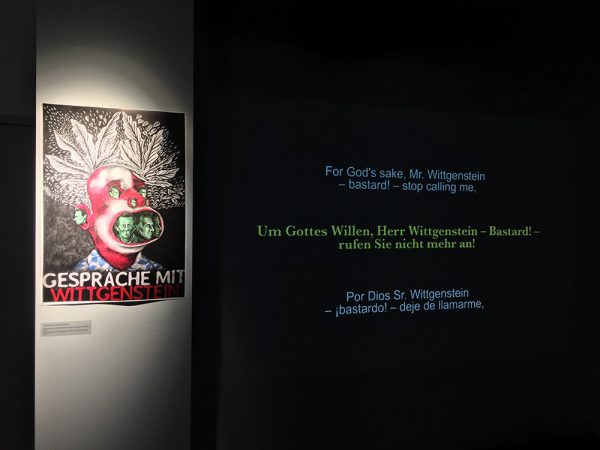
Wittgenstein is calling Perez, a man with Tourette Syndrom. The talk without any sense is related to the conflict between center and periphery. The performance will be a collaboration between Vienna Wittgenstein Haus and Bikini Wax, an artist run space in Mexico. Conversations with Wittgenstein is an installation consisting of a short film combined with a poster. Cueto ́s artwork is a part of the current debate regarding artists who are attempting to address a larger issue of how money and the value of the art commodity is driving the art world. The film is an Aria in 5 acts. Each act is a telephone conversation between Wittgenstein (the Austrian philosopher) and Perez (a man with Tourette Syndrome).
Витгенштајн зове Переза, човека са Туретовим синдромом. Разговор без икаквог смисла повезан је са сукобом центра и периферије. Перформанс ће бити сарадња између Vienna Wittgenstein Haus и Bikini Wax, уметничког простора у Мексику. Разговори с Витгенштајном је инсталација која се састоји од кратког видеа и једног постера. Куето се у својој уметности осврће и на тренутну дебату о уметницима који покушавају да апострофирају већа питања о томе како новац и вредност уметничке робе усмеравају уметнички свет. Филм је Арија у пет чина. Сваки чин је телефонски разговор између Витгенштајна (аустријског филозофа) и Переза (човека са Туретовим синдромом).
ÀGNES HAMVAS & HUBERT HASLER 2020
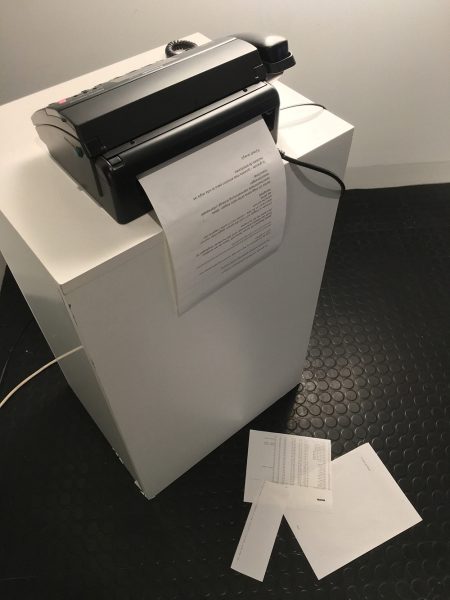
“What can be shown cannot be said” to this quote from Wittgenstein, the new collaboration between Àgnes Hamvas and Hubert Hasler reacts and raises the question of whether Wittgenstein’s attitude to language and image would change like the present society with images and Bypassed text, does a 100 percent visualization also enable better communication?
The artist duo Ágnes Hamvas & Hubert Hasler address the lack of communication, the atrophy of language, the lack of content in short texts and postings. Based on a sentence from a play by René Pollesch ” I hear you but I cannot understand you”.
Уметнички дуо Агнес Хамваш и Хуберт Хаслер бави се недостатком комуникације, атрофијом језика, недостатком садржаја у кратким текстовима и постовима. Рад се базира на реченици из представе Ренеа Полеша „Чујем те, али те не разумем“.
MICHAEL KOCH Mirror Illuaion 2018 / Installation
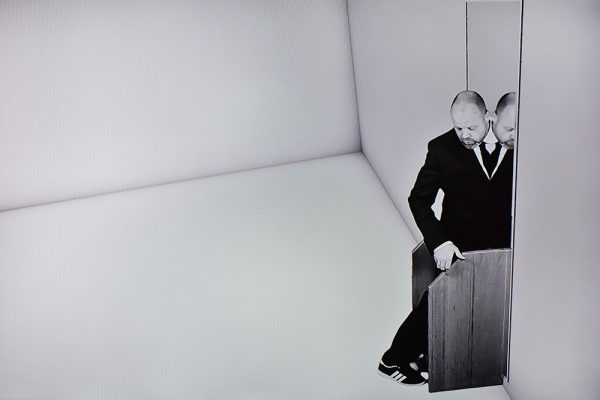
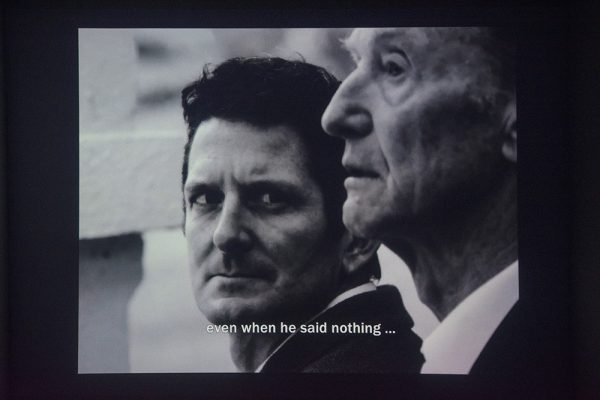
G.E. Moore reflektiert über einen Baum. Wittgenstein reflektiert über Moore.
G.E. Moore reflecting on a Tree. Wittgenstein reflecting on G.E. Moore.
Yukika Kudo worked with the philosopher Alfred Schmid to create a dialogue between Wittgenstein and Moore, shot in classic black and white, the film suggests contemplation, silence, pause.
Јукика Кудо сарађивала је с филозофом Алфредом Шмитом на креирању дијалога између Витгенштајна и Мура; филм је снимљен у класичној црно-белој техници и сугерише контемплацију, тишину, паузу.
Vlado Martek WITTGENSTEIN BI ME VOLIO / Collage & Drawing 1995
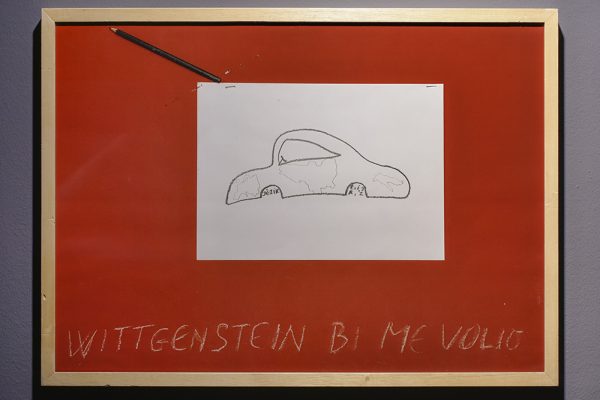
This graphic is an example of appropriation. The naming of the country around me takes on a new reality through artistic practice. The language demonstrates its strength and specific dimension. Perhaps it is a correspondence between heart and language. The drawings combine art, culture and politics. The colors correspond to the alchemical period (nigredo, albedo, rubedo). That is a coloristic constant for me. In another aspect, it is the colors of the Russian avantgarde between 1914 and 30.
Ова графика је пример апропријације. Именовање земље око мене поприма нову стварност кроз уметничку праксу. Језик показује своју снагу и специфичну димензију. Можда је то подударање срца и језика. Цртежи користе уметност, културу и политику. Боје одговарају алхемијском периоду (нигредо, албедо, рубедо). То је колористичка непроменљива за мене. У другом аспекту, то су боје руске авангарде у периоду од 1914. до 1930. године.
NOIMA Purifying 2020 /Action Game / 08:31min / AQB, Budapest – HU, 2020
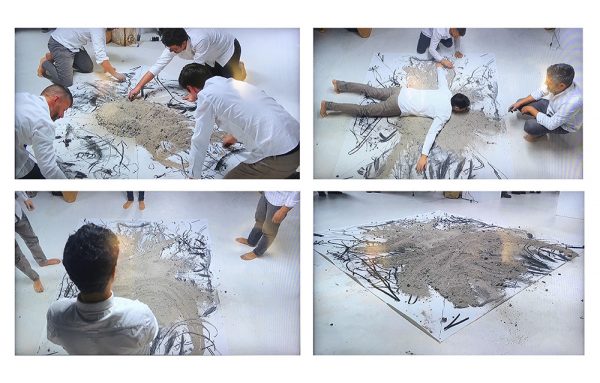
A potentially purifying transfer.
SVETLANA MIRCHEVA 2018 / Banner
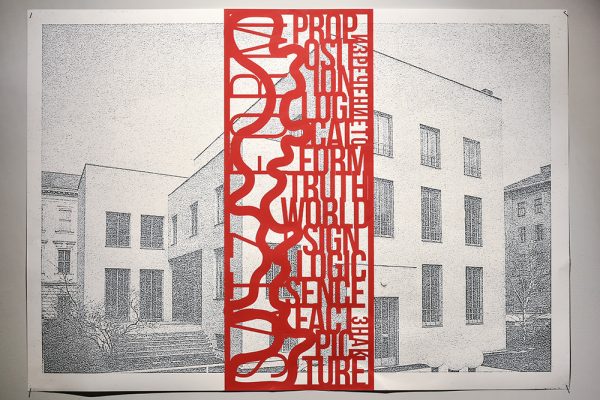
Svetlana Mircheva’s works are based upon chance meetings with things and words. Between rebus and cosmic constellations, she twists slogans and computer explorations. Her main interest is in the grey zones between reality and imagination. Imaginary narratives play an important role in Mircheva’s work. She often uses chance, coincidence and blind dates as starting points in her works. Mircheva questions our trust in the accuracy, clarity and reality of our perceptions of the world as shaped by contemporary digital culture.
Имагинарни наративи играју важну улогу у уметничком раду Светлане Мирчеве. Она често користи вероватноћу, случајност и непознанице као почетне тачке у својим радовима. Мирчева доводи у питање наше веровање у тачност, јасноћу и стварност нашег погледа на свет, погледа обликованог под утицајем савремене дигиталне културе.
ADELINA POPNEDELEVA Samoreklama 2020
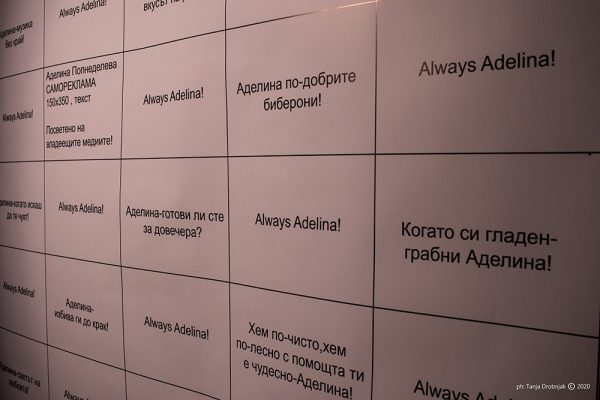
Self-promotion or only advertising
The self advertising image by Adelina Popnedeleva, allows multi-layered language games. Self-advertising as advertising ourselves is one of the basic rules for self employed artists. But it devalues our status, ruins our self confident. It shows the fragile system based on words and how verbal weapons are abused. This also demonstrates the unlimited possibilities for manipulation, especially in the modern technological world. On the third hand, it shows my slight ridicule to the fragile human psyche, ready to listen and buy.
Приказ саморекламе Аделине Попнеделеве омогућава вишеслојне језичке игре. Саморекламирање као начин рекламирања сопственог стваралаштва једно је од основних правила рада самосталних уметника. Али то девалвира статус уметника, уништава самопоуздање. Обзнањује крхки систем заснован на речима и начин злоупотребе вербалног оружја.
LAURA RAMBELLI Retreat 2020 / Performance
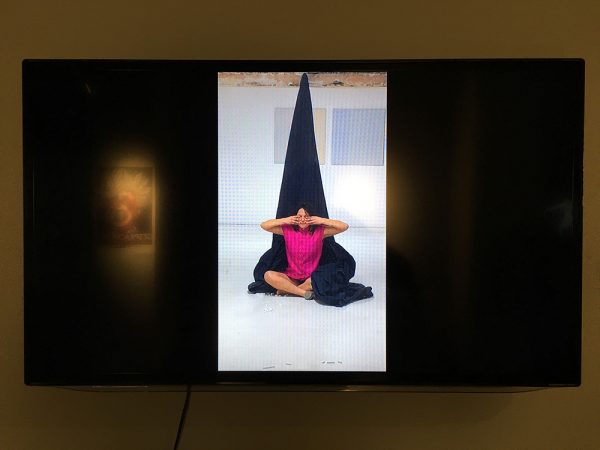
I was immediately struck by the seventh statement of his Tractatus :
“On what cannot be spoken, one must be silent”
Laura Rambelli from Ravenna visualized the silence in her opening performance, which started with a buzzing of bees and incense mist – that magical moment of emptiness between two periods, the cyclical process that nature incessantly demands of man.
In fact, working together and not against this noise, suddenly we become aware of the wonder of the world, “of which language cannot speak”, as Wittgenstein declares. Clean the mind, listen, become aware, breathe and then throw the seeds of the new creation, but is not easy to do. Then, feeling the first traces, wild, like a rebirth: the body moves in a new way, the voice changes, there is a new awareness.
Лаура Рамбели из Равене визуелизовала је тишину у свом уводном перформансу, који је започео зујањем пчела и тамјанском маглицом – тај магични тренутак празнине између два периода; циклични процес који природа непрестано захтева од човека.
ROBERT RESZNER
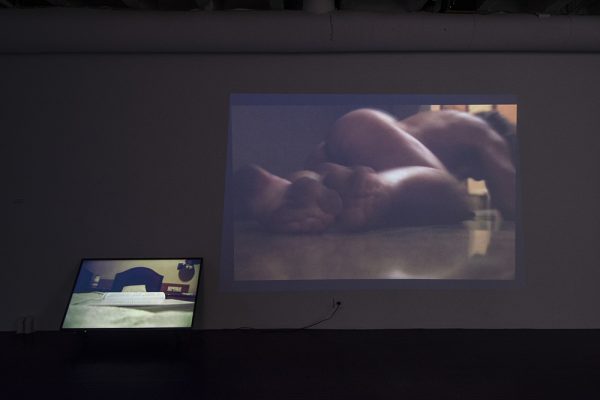
Robert Reszner defines the limits of his language as the limits of his world. The attempt to escape from these boundaries is as unsuccessful in his work as turning the pages of the book.
Роберт Реснер дефинише границе свог језика као границе свога света. Покушај бекства изван од ових граница подједнако је неуспешан у његовом раду као и окретање страница књиге.
EVA MARIA SCHARTMÜLLER Shell Shock 2016 / Video Installation
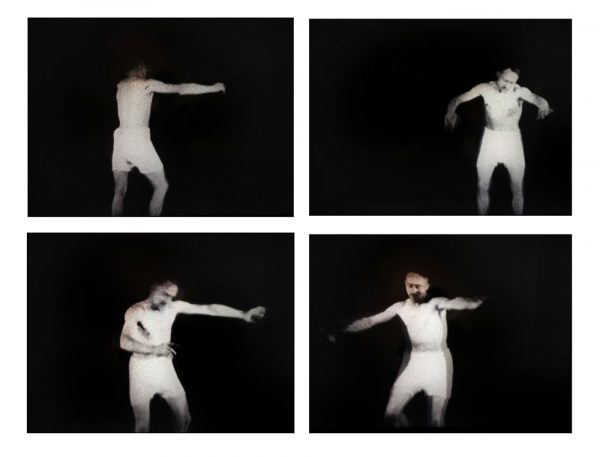
shell shock was a term used to describe military psychiatric syndromes of male hysteria, mobility disorders such as persistent tremor, walking, sitting and standing disorders, tics, symptoms of paralysis, but also disturbances of speech. In her video installation, Eva Maria Schartmüller takes up the horror of the 1st World War including its consequences. The poisoning by mustard gas and the resulting psychological and physical impairments of the so-called war tremblers, who wandered through the post-war landscape as misunderstood and often untreated wrecks.
Ева Мариа Шартмилер у својој видео инсталацији преноси ужас Првог светског рата и његових последица. Тровање иперитом и ментална и физичка оштећења тзв. ратних дрхтаваца, који су лутали послератним пејзажом као несхваћене и често нелечене људске олупине.
text sources: Behandlung im Schatten des Krieges –Militärpsychiatrie und Kinematographie Aufsatz von Dr. phil. Julia Barbara Köhne (Privatdozentin für “Zeitgeschichte und Kulturgeschichte am Institut für Kulturwissenschaft Berlin)
artistic work: impacts of ww1 were illuminated in the form of war-related trauma. sequences of an original film of 1914 are projected and acoustic documentaries of war events give insights into the process of cause and effect.
video: sequences from the movie kriegshysteriker und max none (1916) _functionally-motor irritation or paralysis of states at war participants and whose cure by suggestion in hypnosis_produced by the royal image and film-amt / bufa in berlin
sound: 1ww documentaries in english, german, french
legal notice:
Kriegshysteriker“ und Max Nonne (um 1916). Funktionell-motorische Reiz- und Lähmungs-Zustände bei Kriegsteilnehmern und deren Heilung durch Suggestion in Hypnose, um 1916, produziert vom Königlichen Bild- und Filmamt/BuFa in Berlin, der Vorläuferfirma der Universum Film AG (Ufa), aufgenommen im Allgemeinen Krankenhaus Hamburg-Eppendorf durch Dr. Max Nonne
film rights:
Bundesarchiv/Filmarchiv Berlin Transit Filmgesellschaft mbH, 80335 München, Dachauer Straße 35
with permission from:
Bundesarchiv /Filmarchiv Berlin, FA 2Fehrbelliner Platz 3,10707 Berlin Transit Filmgesellschaft mbH, 80335 München, Dachauer Straße 35
Borjana Ventzislavova It isn´t healthy / Video / AT / 2013 / 13 min
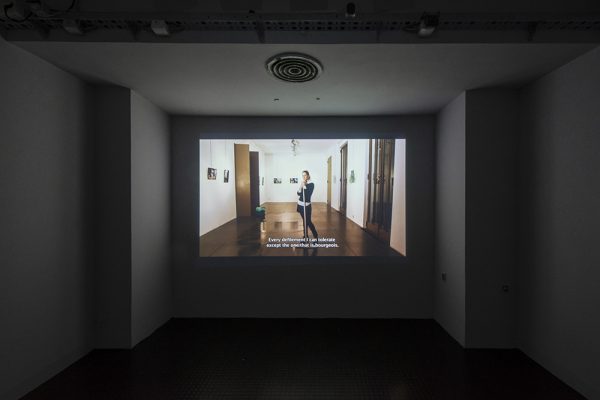
The close-up of the handle and lock of an iron gate opens Borjana Ventzislavova´s video It isn´t healthy. A woman´s voice is to be heard on the soundtrack postulating philosophical assertions: “The world is all, that is the case. The world is the totality of facts, not of things. The world divides into facts.”
Borjana Ventzislalova lays in her video „It is not healthy“ quotes from the Tractatus in the mouths of Wittgenstein Haus employees. The asynchronous synchronicity thus created finds its spatial counterpart in the soccer game of two boys in the street in front of the Wittgenstein House, who exchange contemporary (Bulgarian) political slogans.
Борјана Венциславова у свом видео раду „Није здраво“ цитира делове из Трактата кроз уста запослених у Кући Витгенштајн. Тако креирана асинхрона синхроност налази свој просторни пандан на улици испред куће Витгенштајн, где два дечака играју фудбал и изговарају савремене (бугарске) политичке пароле.
Безгранично заједно покушавамо да визуализујемо Витгенштајнове филозофске мисли, да развијемо теме из његовог живота. Приступи уметника су различити; посетиоци могу слободно асоцирати.
У Витгенштајновом смислу, ми доносимо храброст за преображај, обнову и системску промену.
Ништа није немогуће.
Translation: Eve Heller The Wittgenstein House, site of the Bulgarian Cultural Institute in Vienna, is the point of departure for an unconventional study of architecture, history and language. Through quotes from Wittgenstein, the institute is detached from its daily routine and confronted with the house’s history. In front of it, philosophy comes up against criticism of presentday Bulgarian politics: “EuroTrashCapitalism,” somebody remarks – and kicks a football.
WITTGENSTEIN 2020
PODROOM BEOGRAD
WITTGENSTEIN 2020 PODROOM BELGRADE
The original plan was to travel in 2020/2021 to the territories of the Austro-Hungarian Empire during the First World War, with the first station in Budapest, in the art quarter Project Space. Afterwards, the journey continues to Belgrade to PODROOM and then Muzeul da Arta in Timisoara.
During the First World War Ludwig Wittgenstein was mostly stationed in writing rooms in the Balkans and was mainly concerned with the Catholic faith, his own spirituality and the continuation of the Tractatus. He worked as a medical technical assistant in England during World War II. He continued to tinker with existing equipment until it met his current requirements and thus provided essential support to the British medical staff. As a philosopher he broke all boundaries to filter out the essence of thoughts.
Adaptation, change, movement is the basis of evolution.
Wittgenstein experienced many unusual periods in his life, two world wars, fall of the monarchy, growing anti-Semitism, economic crisis, personal crisis, depressions, death of his siblings. Whether he was inside or outside the social bubble, he tried to adapt to the situation, despite all revolutionary tendencies. He introduced teaching methods that were later used in Waldorf (Steiner) schools. He took his pupils out into nature to identify plants, cooked animal skeletons to give the children the opportunity to understand the anatomical structure. With his pupils he developed the first school dictionary, which later became standard.
In crisis situations he always retreated into nature, alone or with friends, and wandered through the countryside. In doing so, he followed the classical thesis – hiking, lifting his head and letting his thoughts fly. For this purpose, contemplation and grounding, he built a wooden house as a retreat in Skjolden in Norway. Wittgenstein’s love of nature and his humility are as much a starting point as the flood of images in the media, which words can no longer do justice to. His writings warn of the loss of meaning of the spoken word, the excessive use of abbreviations and the mutilation of language, the development of partial illiteracy.
By means of contemporary art, we put various aspects of Wittgenstein’s writings and life up for discussion, thus also referring to current developments and imagined utopias. Wittgenstein was a fervent European, in his spirit the exhibition and its artists travel through Europe and cooperate with local curators and artists. As a result, this show adapts and transforms from place to place and lives a common Europe.
Suddenly, nothing is the way it was. Closed borders, restricted movement, masking is required, as is physical distance. To compensate for all these shortcomings, we have to stick together all the more. This is why we have jointly succeeded in presenting this variant of WITTGENSTEIN. Special thanks to Zorana Đaković Minniti and Jana Gligorijević, the local co-curators and Adrien Feix from the Austrian Cultural Institute, as well as to all participating artists.
A confusing time demands new approaches. Adapting to the century and a pandemic requires a lot of innovation, imagination, personal commitment – fortunately we are living in the 21st century and can rely on digital media that keep boundaries open in our minds and in art.
The responsibility of us artists is to listen to the pulse of the time and to absorb and integrate changes.
This is why the artworks at WITTGENSTEIN in Belgrade are in digital formats, as well as a few selected works presented as posters. Although a print does not even come close to the original artistic work, we wanted to offer the viewer a rough overview of the entire exhibition. Boundlessly together we try to visualize Wittgenstein’s philosophical thoughts, to develop themes from his life. The approaches of the artists are different, there is no limit to the associations of the visitors.
In Wittgenstein’s sense, we bring the courage for change, renewal and systemic change to us.
Nothing is impossible.
Denise Parizek, Curator / 2020
ВИТГЕНШТАЈН 2020
PODROOM БЕОГРАД
Првобитни план био је да се 2020/2021. године путује у места која су у Првом светском рату била део Аустро-Угарске империје, прво у Будимпешту, у уметнички кварт Project Space, затим у Београд, у PODROOM, и даље у Темишвар, у Музеј уметности (Muzeul da Arta).
Током Првог светског рата Лудвиг Витгенштајн је углавном био стациониран у радним собама на Балкану, првенствено се бавећи католицизмом, сопственом духовношћу и писањем Трактата. У Другом светском рату био је болничар у Енглеској. Мењао је и прилагођавао постојећу опрему док није добио оно што му је тренутно било потребно и тиме суштински помогао британском медицинском особљу. Као филозоф, пробијао је све границе како би искристалисао суштину мисли.
Витгенштајн је у свом животу доживео много необичних периода, два светска рата, пад монархије, растући антисемитизам, економску кризу, личну кризу, депресије, смрт своје браће. Без обзира да ли је био унутар или изван „социјалног балона“, настојао је да се прилагоди ситуацији, упркос свим револуционарним тенденцијама. Увео је методе наставе које су касније коришћене у Валдорф (Штајнеровим) школама. Изводио је ученике у природу да препознавају биљке, кувао је животињске костуре како би деци пружио прилику да схвате анатомску структуру. Са својим ученицима је саставио први школски речник, који је касније постао стандардни.
У кризним ситуацијама је увек одлазио у природу, сам или са пријатељима, и лутао кројиликом. При томе је следио класичну тезу – ходати, подићи главу и пустити мисли да лете. У ту сврху је саградио дрвену кућу у Скјолдену у Норвешкој, уточиште у које се повукао да би се бавио својим филозофским истраживањима. Витгенштајнова љубав према природи и скромност исто су толико полазиште колико и поплава слика у медијима, које речи више не могу пратити. Његово писање упозорава на губитак значења изговорене речи, прекомерну употребу скраћеница и осакаћивање језика, стварање делимичне неписмености.
Помоћу савремене уметности, отворили смо расправу о различитим аспектима Витгенштајнових списа и живота, реферишући и на актуелна дешавања и замишљене утопије. Витгенштајн је био ватрени Европљанин, у његовом духу, изложба и уметници који на њој учествују путују Европом и сарађују са локалним кустосима и уметницима. Због тога се овај пројекат прилагођава и трансформише од места до места и живи заједничку Европу.
Одједном се све променило. Затворене су границе, ограничено кретање, потребне су маске и физичка удаљеност. Да бисмо умањили штету због свих тих неповољних околности, морамо се још више држати заједно. Зато смо заједнички успели да представимо ову верзију ВИТГЕНШТАЈНА. Посебно се захваљујемо београдским ко-кустоскињама Зорани Ђаковић Миннити и Јани Глигоријевић и Адријану Фајксу из Аустријског културног форума, као и свим уметницима који учествују.
Прилагођавање, промена, кретање су основа еволуције.
Збуњујуће време захтева нове приступе. Прилагођавање времену и пандемији захтева много иновација, маште, личне посвећености – срећом живимо у 21. веку и можемо се ослонити на дигиталне медије који границе у нашем уму и уметности држе отворенима.
Одговорност нас уметника јесте да ослушкујемо пулс времена и да упијамо и интегришемо промене.
Због тога су радови на ВИТГЕНШТАЈНУ у Београду у дигиталном формату, а неки у виду постера. Иако се штампани постер ни издалека не може поредити са оригиналним уметничким радом, желели смо да пружимо посетиоцу макар груби увид у целокупну изложбу.
Кустоскиња Дениз Парицек, 2020
Translation Vesna Strika
